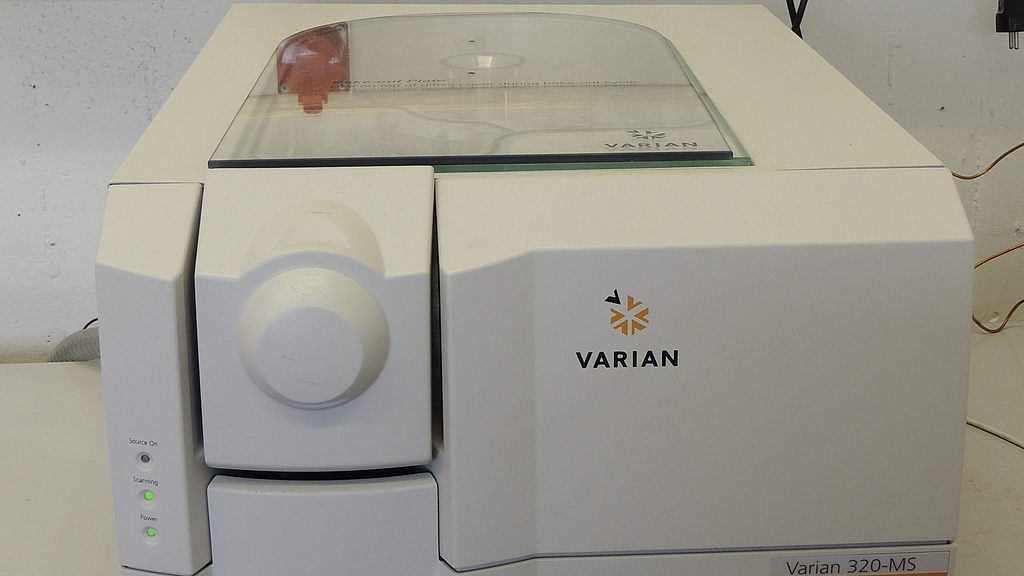GC-MS measurements
Theoretische Grundlagen:
Theoretical principles:
Mass spectrometry forms one method for determining molar masses and characteristic structural elements in organic chemistry. The substance is first evaporated in a high vacuum and ionized in an ion source. The ionized molecules and additionally formed fragments are accelerated in an electric field and bundled into a beam. In a magnetic field, the ions are deflected along circular paths whose radius depends on their mass/charge ratio, and thus separated. They are then registered in a detection device according to mass and frequency. Ionization of molecules usually occurs by electron impact (EI), forming molecular ions (radical cations).
In addition to electron impact ionization ("EI-MS"), chemical ionization ("CI-MS") is also used. Here, the ions are generated by chemical reactions in the gas phase. A "reaction gas" (noble gases, methane or another alkane) is used for this purpose, which is ionized by electron impact. The resulting ions can react directly with the molecules of the sample under investigation and ionize them by charge exchange; however, it is also possible that the ions formed from the reaction gas first undergo further changes and form more reactive ions, which then ionize the sample molecules by transferring a proton. For example, methane as a reaction gas mainly yields the ion CH5+ as a reactive ion. With this method, fragmentation (fragments formed) is lower than with direct ionization.
Measurements can be made using the DEP or DIP method. In the DEP method, the sample is dissolved in an easily evaporated solvent. A small "wire eye" on the DEP rod is immersed in the solution and the sample is then evaporated under high vacuum.
In the DIP method, samples that are not soluble can also be measured. To do this, a small amount of the substance is placed in a small glass tube and evaporated from it under high vacuum.
Sample delivery information:
In routine operation, the DEP method is used for measurement. For this purpose, please make an accurate weighing (approx. 1-2 mg) into a glass with a large opening. The solvent has to be indicated (preferably EA, DCM or acetone), because the dilutions are made by the measuring staff.
Mass range: 50-2000 amu
Order slips for the MS measurements are available here.
